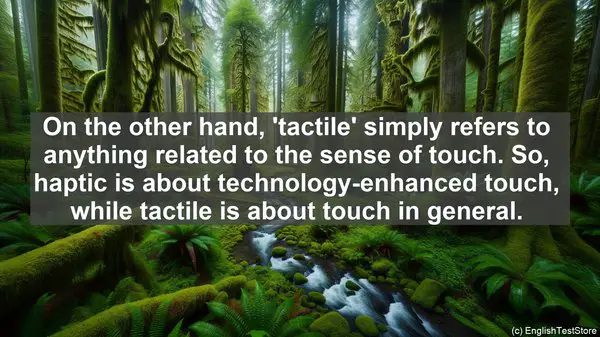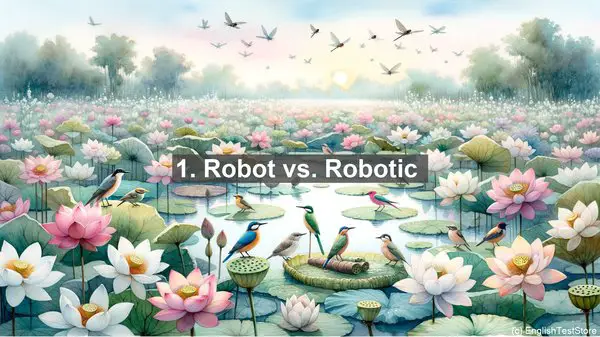Introduction
Welcome to today’s lesson. As you delve deeper into the world of robotics and automation, you’ll come across several terms that might seem similar but have distinct meanings. In this lesson, we’ll explore the top 10 commonly confused words in this field, helping you avoid any misunderstandings in your future studies and career. So, let’s get started!

1. Robot vs. Robotic
The term ‘robot’ refers to a physical machine that can perform tasks autonomously or semi-autonomously. On the other hand, ‘robotic’ is an adjective that describes something related to robots. For example, you might say, ‘The robotic arm precisely assembled the components.’ Remember, ‘robot’ is the noun, and ‘robotic’ is the adjective.
2. Automation vs. Autonomy
While both terms are related to the idea of machines performing tasks, there’s a crucial difference. ‘Automation’ refers to the process of making a system operate automatically, often using pre-programmed instructions. On the other hand, ‘autonomy’ refers to a machine’s ability to make decisions and operate independently, without human intervention. So, automation is about following instructions, while autonomy involves decision-making.
3. Accuracy vs. Precision
In the context of robotics, ‘accuracy’ refers to how close a measurement or result is to the true or desired value. On the other hand, ‘precision’ refers to the consistency or repeatability of a measurement, regardless of its accuracy. Imagine a robot arm repeatedly placing a component in the same spot. If it consistently places it slightly off, it lacks precision, even if the average position is accurate.
4. Actuator vs. Sensor
Both ‘actuator’ and ‘sensor’ are essential components of a robotic system. An ‘actuator’ is a device that converts energy into motion, such as a motor that moves a robot’s arm. On the other hand, a ‘sensor’ is a device that detects and measures physical quantities, such as temperature or distance. So, an actuator moves, while a sensor senses.
5. Algorithm vs. Program
In the world of robotics, an ‘algorithm’ is a step-by-step procedure or set of rules for solving a problem or accomplishing a task. It’s more abstract and focused on the logic of the solution. On the other hand, a ‘program’ is the implementation of that algorithm in a specific programming language, with detailed instructions for the computer or robot to follow.
6. Feedback vs. Feedforward
Both ‘feedback’ and ‘feedforward’ are strategies used in control systems. ‘Feedback’ involves using information from sensors to adjust the system’s output, based on the difference between the desired and actual values. On the other hand, ‘feedforward’ involves anticipating disturbances or changes and adjusting the system’s output proactively, without relying on feedback. So, feedback reacts, while feedforward predicts.
7. Kinematics vs. Dynamics
In the study of robot motion, ‘kinematics’ focuses on the geometry and positions of the robot’s components, without considering the forces involved. It’s like the robot’s ‘skeleton.’ On the other hand, ‘dynamics’ is concerned with the forces, torques, and accelerations that affect the robot’s motion. It’s like the robot’s ‘muscles.’ So, kinematics is about positions, while dynamics is about forces.
8. Machine Learning vs. Artificial Intelligence
While often used interchangeably, ‘machine learning’ and ‘artificial intelligence’ are not the same. ‘Machine learning’ is a subset of artificial intelligence that focuses on algorithms and models that enable computers to learn from and make predictions or decisions based on data. On the other hand, ‘artificial intelligence’ is a broader concept that encompasses any system or machine that can simulate human intelligence, including problem-solving and decision-making.
9. Simulation vs. Emulation
Both ‘simulation’ and ’emulation’ involve creating virtual representations, but for different purposes. ‘Simulation’ is about modeling and replicating the behavior of a real system, often for testing or training purposes. On the other hand, ’emulation’ is about mimicking the functionality of a specific system or device using different hardware or software. So, simulation imitates, while emulation replicates.

10. Haptic vs. Tactile
Both ‘haptic’ and ‘tactile’ relate to the sense of touch, but in different ways. ‘Haptic’ refers to the use of technology to provide tactile sensations or feedback, often through force or vibration. On the other hand, ‘tactile’ simply refers to anything related to the sense of touch. So, haptic is about technology-enhanced touch, while tactile is about touch in general.
